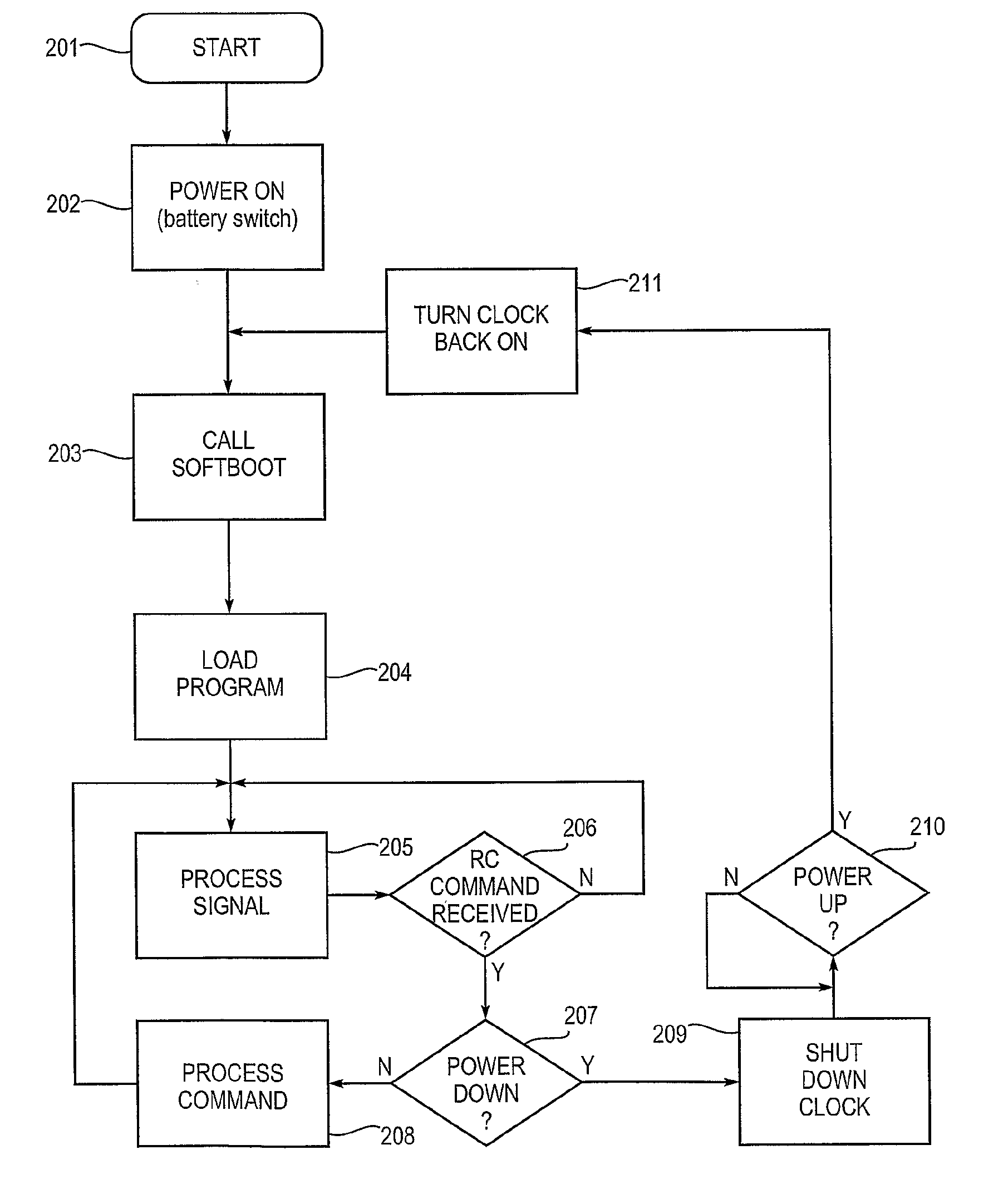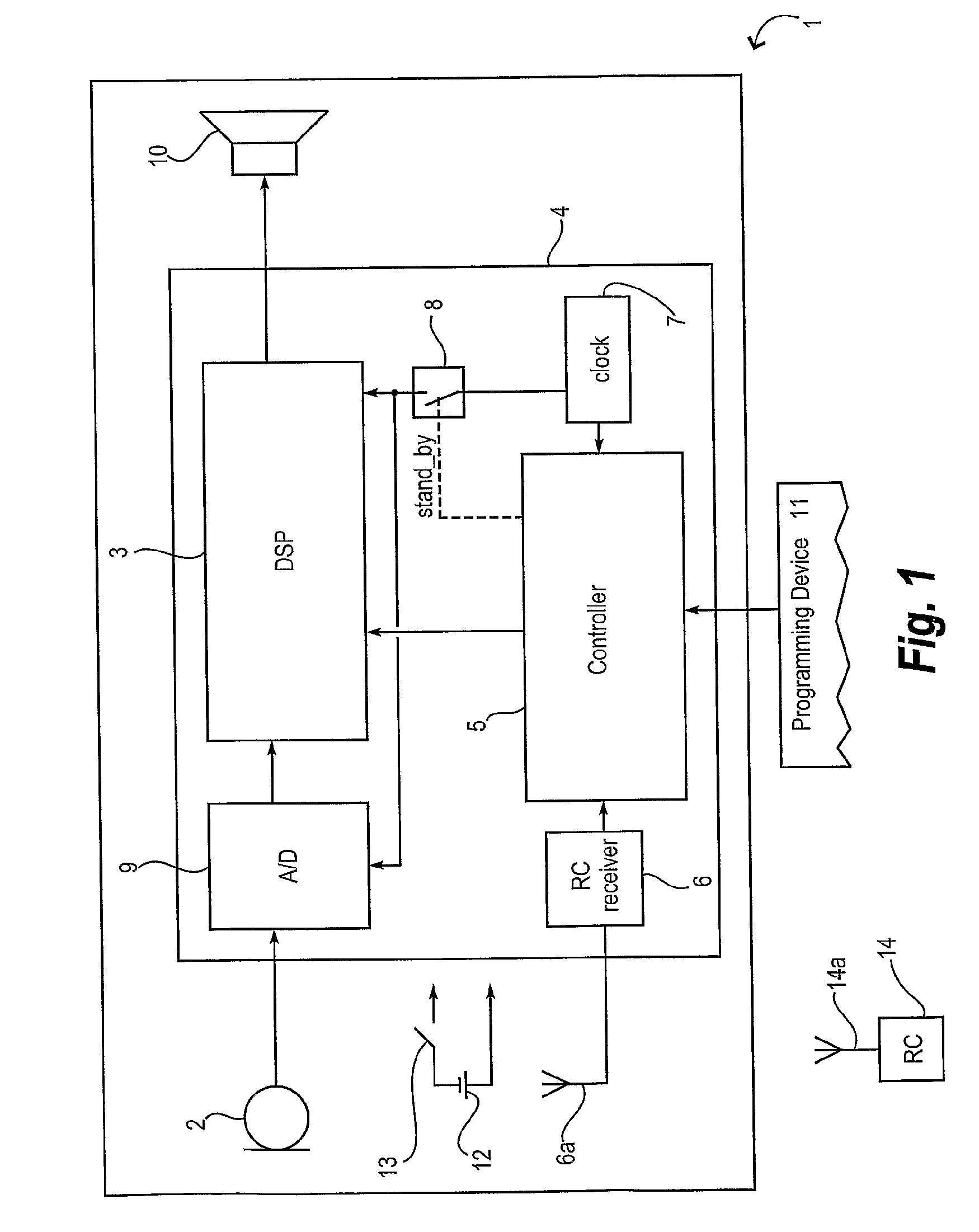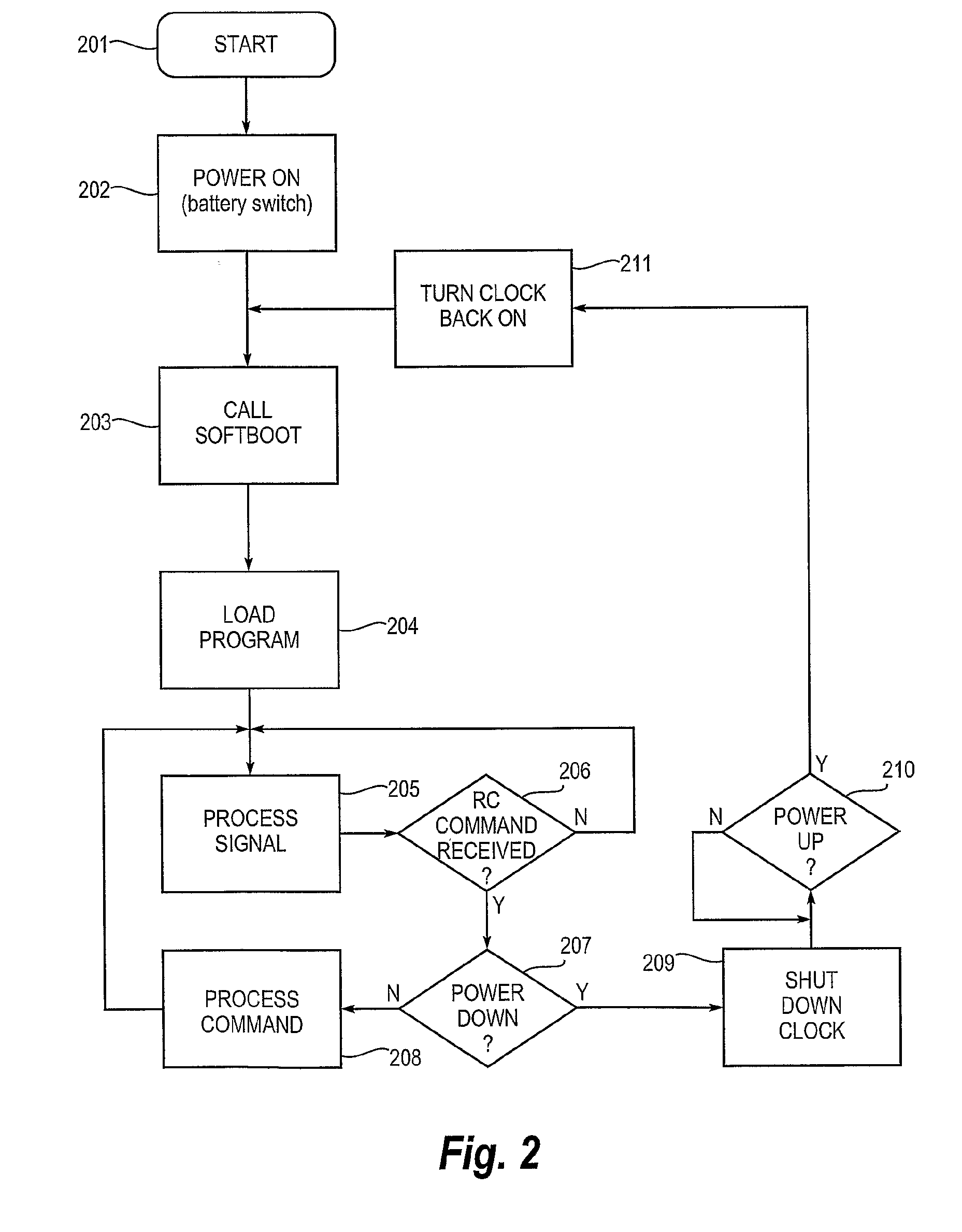Hearing aid and a method of operating a hearing aid
a hearing aid and battery technology, applied in the field of hearing aids, can solve the problems of limiting the durability of mechanical switches and battery terminals within the hearing aid, affecting the operation of hearing aids, so as to save the power consumed by this part of the circuit, and effectively inhibit the operation.
- Summary
- Abstract
- Description
- Claims
- Application Information
AI Technical Summary
Benefits of technology
Problems solved by technology
Method used
Image
Examples
Embodiment Construction
[0041]FIG. 1 is a schematic block diagram illustrating a hearing aid 1 comprising a microphone 2, an output transducer 10, a microelectronic circuit 4 comprising an A / D converter 9, a signal processor 3, a controller 5, a remote control receiver 6, a clock generator 7, and an electrically controlled switch 8. The hearing aid 1 further comprises a power source 12, preferably in the form of a battery cell, a mechanically operated battery switch 13, and a receiver antenna 6a. Also illustrated in FIG. 1 is a remote control transmitter 14 having a transmitter antenna 14a, and an external programming device 11.
[0042]When in use, the microphone 2 picks up acoustic signals and converts them into analog electrical signals. The analog electrical signals are converted into digital signals by the A / D converter 9 to make them available for conditioning and amplification by the signal processor 3 according to a compensating prescription in order to alleviate a hearing loss. The signal processor 3...
PUM
 Login to View More
Login to View More Abstract
Description
Claims
Application Information
 Login to View More
Login to View More - R&D
- Intellectual Property
- Life Sciences
- Materials
- Tech Scout
- Unparalleled Data Quality
- Higher Quality Content
- 60% Fewer Hallucinations
Browse by: Latest US Patents, China's latest patents, Technical Efficacy Thesaurus, Application Domain, Technology Topic, Popular Technical Reports.
© 2025 PatSnap. All rights reserved.Legal|Privacy policy|Modern Slavery Act Transparency Statement|Sitemap|About US| Contact US: help@patsnap.com



